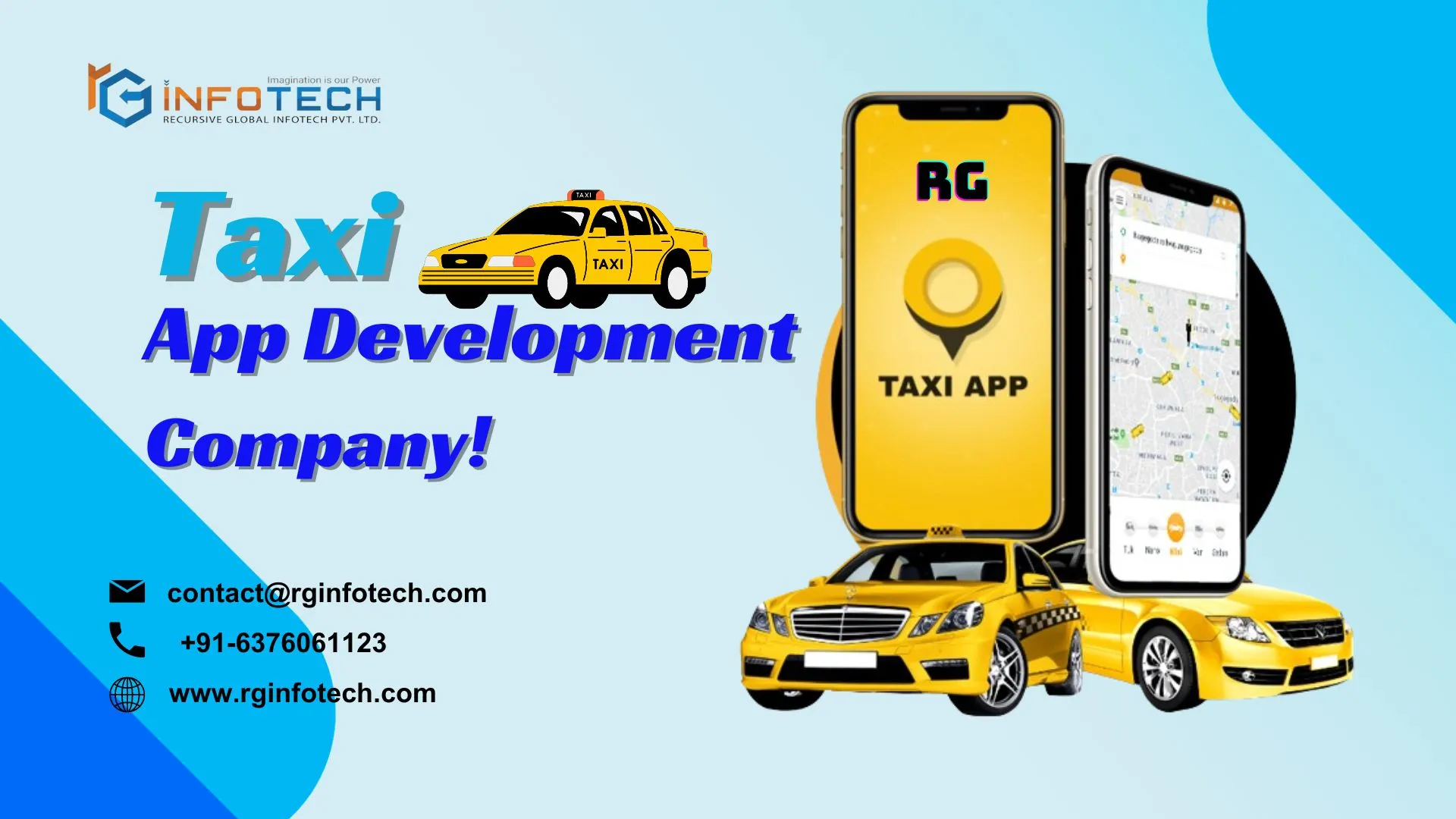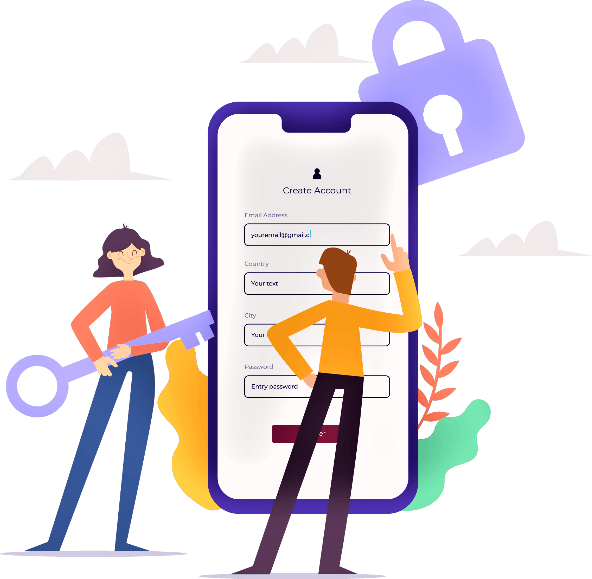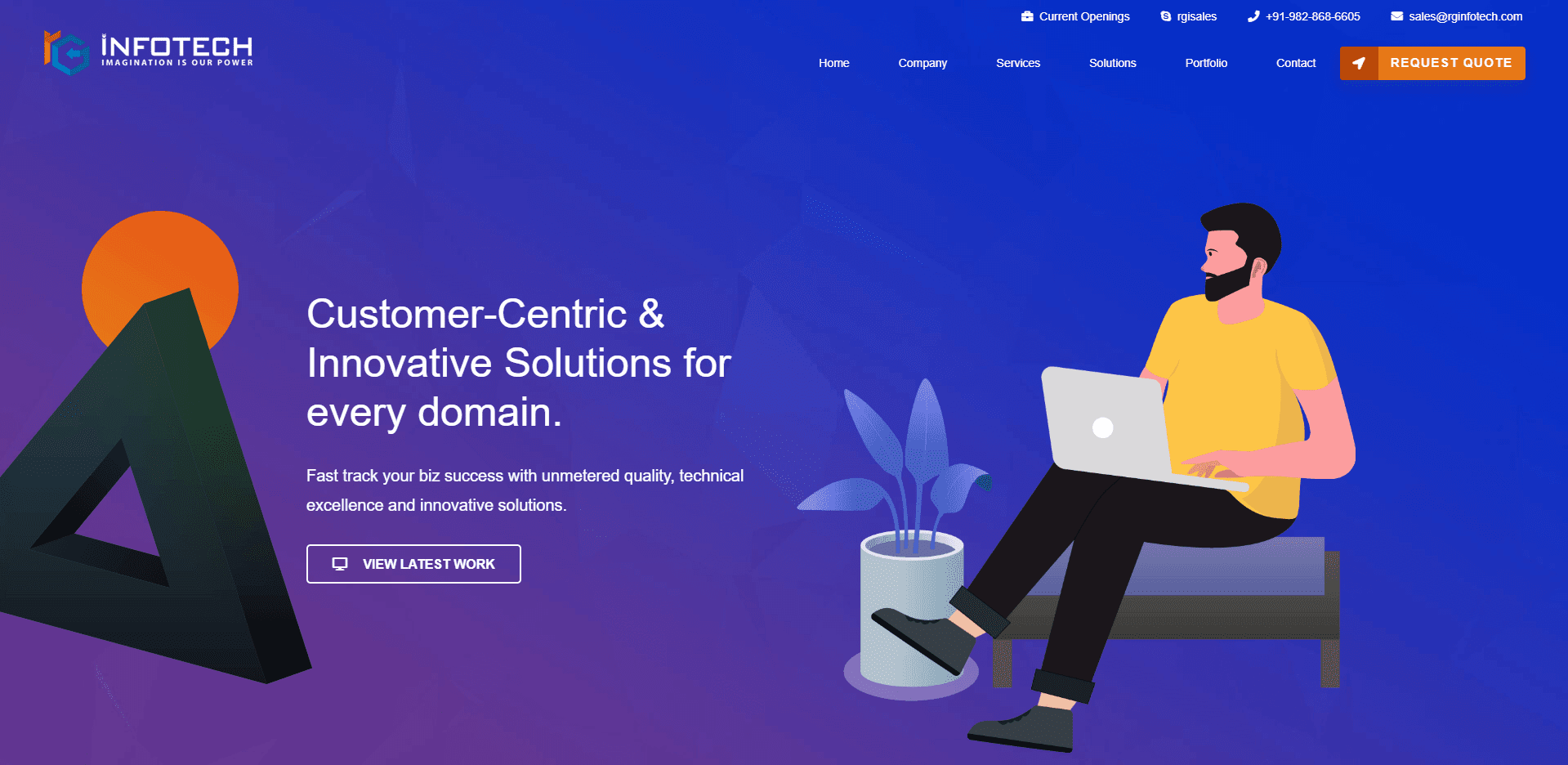On-Demand Taxi App Development Company

The need for convenient transportation drives the rapid growth in taxi app development during the digital age. The possibility of being a new entrepreneur or even an established business depends on owning a great cab booking application to transform how you engage with your customers.
According to Statista reports, in 2022, ride-hailing services had already generated nearly twice as much revenue as conventional taxis.
The ride-hailing market will grow to more than $54 billion by 2027, while its taxi peers are likely to record decreasing revenue, dropping from around $24 billion to under $21 billion. The sector is moving towards online shared transportation applications.
If you are looking for the best taxi app development company, read this guide till the end to know everything about it.
Launch your revolutionary taxi app idea with our expert developers. Schedule a free call to discuss your vision!
What Makes You Invest In Taxi App Development?
The demand for on-demand ride services is only increasing. With the amazing stories of such platforms as Uber and Ola, many businesses are eager to create their ride-hailing applications.
A great mobile app boosts customer satisfaction and gives more visibility to your brand in a competitive marketplace.
Key Benefits of A Custom Taxi App Development
-
-
-
- User-Experience: Seamless and intuitive user interface; it enhances user engagement.
- Real-time Tracking: This would enable passengers to track their rides, thus improving safety and making it more transparent.
- Flexible payment options: One can reach a wider market since there are several payment options.
- Scalability: A custom solution scales with your business and changes in requirements over time.
-
-
Key Features of Your Taxi App Development
To create a highly successful taxi booking app, several key features need to be carefully considered. Below, we break down these essential components of the taxi app:
1. User Profiles
User profiles are the feature that allows passengers to have an account within the app.
-
-
-
- Database Management: User profiles will be saved in a safe database, stored with necessary data, such as name, contact information, payment options, and ride history.
- Personalization: Users could easily personalize their profiles with preferences such as favorite payment methods or preferred drivers to make the experience more convenient for them.
- Why It Matters: Personalized profiles can make the customer highly engaged and satisfied, leading to a better overall experience and ensuring high retention rates.
-
-
2. GPS Integration
GPS integration, or Global Positioning System, for real-time location tracking.
-
-
-
- Location Services API: The application uses APIs (Application Programming Interfaces) to harness GPS functionality on the devices of users. This therefore gives precise location information for the driver and passenger.
- Mapping and Navigation: The app integrates mapping services, such as Google Maps, to calculate the best routes or turn-by-turn directions toward an efficient experience.
- Why It Matters: With real-time tracking, safety, and reliability increase because a passenger knows exactly when to expect his or her ride.
-
-
3. Rating And Review System
It is a rating feature where users can grade rides and give their feedback.
-
-
-
- Rating & Reviews: The ratings and reviews of a user and driver profile are contained in another database. That means feedback is related to every ride, good, bad, or average.
- Analytics: The system can be efficient in detecting trends of ratings over time, indicating future trends, frequent complaints, and areas for improvement.
- Why It Matters: Because user-generated feedback builds trust in the community, those drivers and passengers are encouraged to continue their high standards of service.
-
-
4. Push Notification
Direct sends notifications to the user’s device for any updates. The app would make use of services like Firebase Cloud Messaging to push down real-time messages, such as ride confirmations and driver arrivals for actual realization, as well as promotional offers.
-
-
-
- User Preferences: Users can customize their notification settings, choosing which alerts they want to receive, ensuring a non-intrusive experience.
- Why it matters: Keeping users in the know fosters engagement and nurtures that connection between the app and its users, driving repeat usage.
-
-
5. Admin Dashboard
A universal management interface for all facets of an application.
-
-
-
- The User Management System: It manages the driver with the passenger through the dashboard including verification of profile as well as support requests.
- Analytics and reporting: Integrated analytics would hence give insights into the ride patterns, and revenue generation, among other user engagement metrics to make data-driven decisions.
- Real-Time Updates: Admins can monitor ongoing rides, handle disputes, and manage financial transactions, ensuring smooth operations.
- Why It Matters: An effective admin dashboard simplifies management, enhances operational efficiency, and provides needed insight for informed business decisions.
-
-
Selecting The Right Taxi App Development Company
Choosing the right developer for your taxi app project is quite the key to your success. Given the many companies knocking at your door, it would seem that choosing the right one is quite an annoying task.
Here are some in-depth guidelines meant to accompany you on the entire selection process:
1. Proven Expertise
An experienced developer who understands taxi app development will know precisely what it takes to bring your vision to life. Look for a company that is a ride-hailing application specialist.
Portfolio: Go through their previous work to check if they have experience with any other app of the kind you intend to design. Look particularly for the Uber clone or app like Ola for development and good experience. This will make them capable of dealing with complex functionalities in a ride-sharing process.
Case Studies: Request case studies explaining what problems they face, and how were these problems solved in their previous projects. It will help to analyze their approach to handling a specific problem or issue.
2. White Label Solutions
If you’re looking to enter a market in a hurry, white-label solutions are truly a game-changer because they’re applications already built that can be molded to fit the look and feel of your brand.
Customization Options: Ensure that the white label solutions provided allow for customization to fit your needs-branding, design, unique features, and more.
Time Efficiency: Ask about the expected deployment time. A good white-label solution should drastically reduce the time taken for development to ensure that you launch earlier and grab some share of what is available in the market.
3. Total Products Design And Services
Making the taxi booking app successful requires several phases-from design to support after the app launch. An end-to-end service company would ensure that the process is streamlined and complications are minimized. What to Expect:
Full Spectrum of Services: Ensure that the company provides design, development, testing, and ongoing maintenance. A full spectrum will allow better coordination and proper communication about the development cycle.
Technical Support: Know the type of support the company will offer post-launch, as most people think of software upgrades or fixing bugs, and how customer feedback on performance so far has been, to keep going about changes going in the market.
4. Testimonials From Clients
Real-life experiences can indeed be very telling about the reliability and quality of work of a company. Client testimonials and reviews will give you an idea of how previous clients were satisfied with their deals.
Varied Feedback: An individual should view reviews on different websites, such as Google, Clutch, social media, and so forth, to be able to have a well-rounded understanding of the reputation of the particular company. Pay attention to both negative and positive reviews as well.
Case Studies: Request case studies demonstrating the approach of the company toward problems its creativity in solutions and the overall impact on the businesses of its clients. Successful partnerships are often worded in terms of trust and reliability.
List of Popular Apps Developed For Online Taxi Services



The following is a list of popular apps developed for online taxi services, along with their distinctive features and functionalities that made them even more successful in the ride-hailing industry:
1. Uber
Overview: There is no new word said about any other service provider than Uber. It is one of the pioneers in the ride-hailing industry and offers a range of services from standard rides to luxury options.
Features: Track in real-time, different payment options, rating, and review, UberPOOL, in-app chat.
2. Lyft
Overview: Lyft is a huge competitor to Uber in the United States, and has been known for its friendliness and community-centered attitude towards rides.
Features: Lyft offers a scheduled ride feature, in-app tipping, a strong driver community, and many ride options like shared rides.
3. Ola
Overview: From the land of India, Ola has swept its services to many countries and covers every mode of transportation.
Features: In-app chat, different kinds of rides – from electric and auto-rickshaws – and loyalty programs.
4. Grab
Overview: Southeast Asia’s conquering ride-hailing company offers not only ride-hailing but also food delivery and digital payment services.
Features: Multi-service application, extreme loyalty scheme, and payment integration system.
5. Didi Chuxing
Overview: Didi is China’s largest ride-hailing app, offering a wide range of services, from a taxi to a private car.
Features: Ensures customer safety features such as tracking, voice call anonymization, and possibilities with various types of vehicles.
6. Bolt
Overview: European competitor focuses on price and support for drivers.
Features: Competitive pricing, easy application use, and extra features such as scooter rental.
7. Curb
Overview: Curb allows passengers to hail a licensed taxi in the United States and targets the older traditional taxi service.
Features: Estimation of fare easily, in-app payments, and hailing a cab from your mobile.
8. Gett
Overview: It is available for professional business travelers who do not want hassle while booking taxis in major cities.
Features: Account in corporate places, fixed pricing, and black cab services.
What Will The Cost of Taking A Build To Create A Taxi App?
Building a taxi app may cost between $10,000 and over $100,000. Key determinants of this cost include the complexity of the application, the requested features, such as GPS integration and payment systems, the platform involved (iOS, Android, or both), and the location of the development team.
Custom is likely to be on the higher end, and white-label may bring about some cost savings.
Creating a Personalized Uber Clone
An Uber clone is a good entry into the ride-sharing market. One is creating an application that replicates the most essential features of the original but comes with unique functionalities to make your service different.
Develop this application in close collaboration with your taxi app development team to ensure that your application meets your specific target audience’s needs.
Create your Taxi App with RG Infotech
Launch your taxi app with RG Infotech, where innovation meets reliability! Get the best taxi-app-development solutions designed by expert engineers who focus on your business needs.
From user-friendly interfaces to the best backend systems, ensure a smooth ride and driving experience. Ride over competition in the ride-hailing market with us.
Conclusion
Long term, with taxi app development investment, any newcomer to the transport industry knows that they are getting into the right business. With a correct taxi app development company, one gets to create a very useful, friendly user interface and engaging application for their business. For an on-demand solution or even an app clone, the best-developing company will walk you through the whole process from conceptualizing to launch.
Ready to take a ride into the world of ride-hailing? Let’s discuss how we can help you make your vision a reality, so reach out to us today.
Frequently Asked Questions (FAQs)
Taxi app development can be defined as developing a mobile application to locate, book, and track rides and, besides, handle the payments for any transportation service. Apart from the above capabilities, nearly all applications include user profiles and ratings combined with GPS tracking.
Develop a taxi-booking application, cashing in on the boom of ride-hailing. This beautifully designed application will bring comfort through convenience to the users, boost customer satisfaction, and make you build a brand that becomes distinctive from others.
To create an effective ride-hailing application, there are described below some necessary features:
-
-
-
- User Profiles: Account for riders, personalized.
- GPS: GPS facility to track the ride in real time.
- Rating and Review System: Rating and reviewing provide feedback to set up trust.
- Push Notifications: Track ride status and promotion messages.
- Admin Dashboard: Everything to manage your drivers and finances.
-
-
Just like before, follow these steps before choosing an app development company for taxi apps:
-
-
-
- Proven Experience: Try to find a company that has experience in building ride-hailing apps through their portfolio.
- White Label Solutions: If you need things to come together, find companies that give you a framework you can customize.
- All Services Under One Roof: Ensure that they can give you a full range of support from design to deployment.
- Customer Testimonials: Sometimes positive ratings are excellent pointers for reliability and quality.
-
-
White label is a solution that is already built and may be branded and customized to fit the specific need. It allows quicker deployment while still offering flexibility to change features and branding to work toward the business model.
It will also depend on the features, complexity, and location of the development team. Generally, costs may run between $10,000 over $100,000, depending on your requirements.









